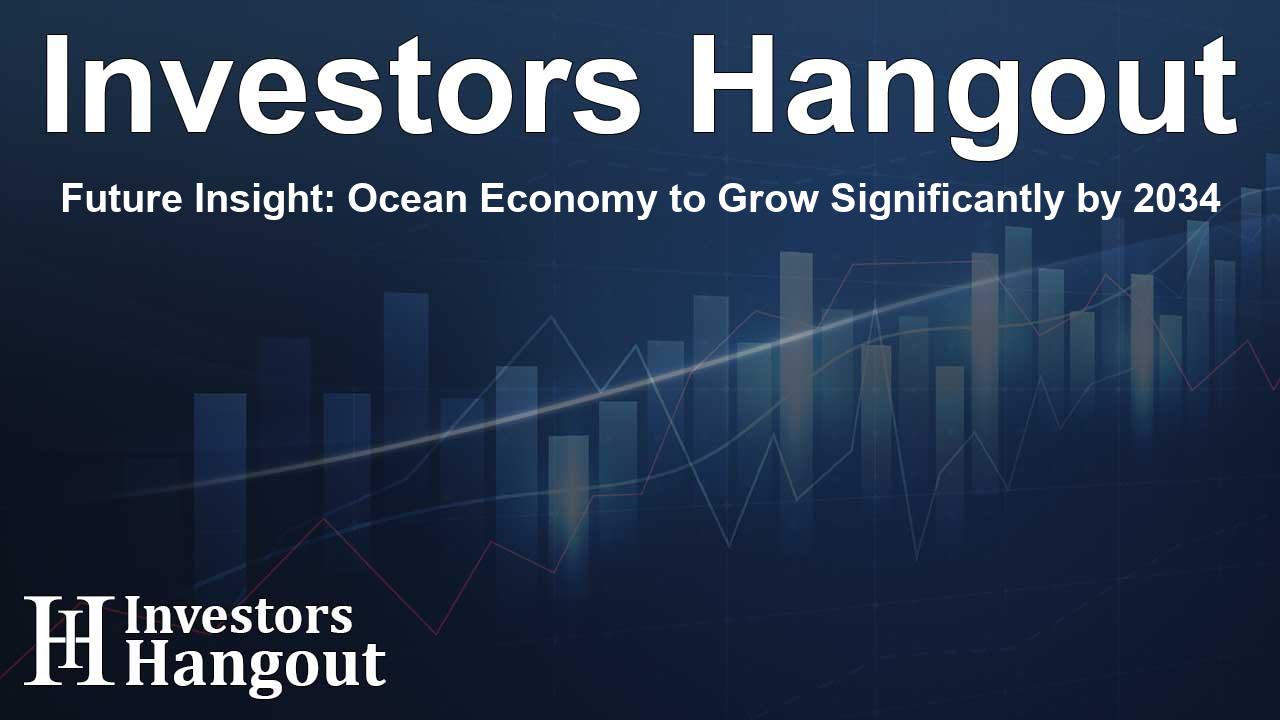Future Insight: Ocean Economy to Grow Significantly by 2034

Ocean Economy Market Growth and Future Outlook
In recent years, the global ocean economy has captured significant attention due to its vast potential and economic contributions. This sector was valued at approximately USD 2.39 trillion, and with a robust compound annual growth rate (CAGR) of 7.8%, it is projected to reach an impressive USD 5.04 trillion by 2034.
Understanding the Ocean Economy
The ocean economy encompasses various industries that utilize and preserve ocean resources, combining economic growth with sustainability. It aligns closely with the principles of the blue economy, which recognizes the ocean not just as a source of wealth but as a vital ecological entity that requires protection and respect.
The Blue Economy Concept
The blue economy model represents a holistic approach to economic development. It integrates sectors like marine biotechnology, tourism, renewable energy, fishery management, and maritime transport, seeking a balance between growth and environmental stewardship. Investments into these areas not only drive economic expansion but also contribute to the sustainability of marine ecosystems.
Market Segmentation and Insights
The ocean economy is segmented into key industries such as:
- Marine Renewable Energy
- Fisheries and Aquaculture
- Marine Biotechnology
- Marine Transport and Shipping
- Marine Tourism and Recreation
- Offshore Oil and Gas
- Others
Each of these segments plays a critical role in driving the growth of the ocean economy and presents unique opportunities for sustainable development.
Drivers of Growth in the Ocean Economy
Several key factors are propelling the growth of the ocean economy, chief among them being the rising demand for energy and seafood.
Growing Energy Needs
Global consumption of oil and gas continues to rise, making it a vital component of the ocean economy's expansion. The increasing reliance on these resources contributes to increased offshore exploration and extraction activities. As energy demands escalate, investments in marine technologies and infrastructure, such as offshore drilling platforms and renewable energy installations, are seeing robust growth.
Demand for Seafood Products
With a growing global appetite for diverse seafood, countries rich in marine resources are experiencing a surge in their ocean economy sectors. Areas specializing in aquaculture are rapidly developing, illustrating the positive trade dynamics that highlight seafood's significance in global markets. Markets for locally sourced seafood have also gained traction as consumers become more conscious of sustainability and sourcing.
Regional Insights
Various regions are vital in shaping the ocean economy landscape, with North America leading due to its vast coastline and investments in marine infrastructure.
North American Market Dynamics
In North America, the ocean economy thrives, supported by advanced shipping sectors and major energy production initiatives. The combination of a developed marine infrastructure and investment creates a robust environment for growth in marine industries.
Asia-Pacific Growth Potential
Conversely, the Asia-Pacific region is anticipated to grow at the highest CAGR during the projection period. Urbanization, advancements in maritime trade, and increased offshore energy investments are key growth drivers. The region's e-commerce boom has spurred demand for efficient logistics, increasing investments in shipping technologies and port development.
Recent Advancements in the Ocean Economy
Innovation remains at the forefront of growth within the ocean economy, with various companies expanding their capabilities and market reach.
Strategic Acquisitions
For instance, DNV's acquisition of Ocean Ecology marks a significant step in bolstering its influence in aquaculture and biodiversity. Similarly, ABB's purchase of DTN Shipping exemplifies the industry's shift towards integrating advanced analytics into maritime operations. These strategic moves highlight the competitive nature of the ocean economy market and the constant evolution of technologies and operational efficiencies.
Frequently Asked Questions
What is the projected growth rate of the ocean economy market?
The ocean economy is expected to exhibit a CAGR of 7.8%, reaching USD 5.04 trillion by 2034.
What are the main drivers of growth in this market?
Key growth drivers include increasing consumption of oil and gas, rising demand for seafood, and developments in marine technology.
Which regions are leading the ocean economy?
North America currently leads the ocean economy, closely followed by the Asia-Pacific region, which is anticipated to experience the highest growth.
What industries are included in the ocean economy?
The ocean economy includes marine renewable energy, fisheries, marine biotechnology, maritime transport, and offshore oil and gas, among others.
How does the blue economy influence ocean resources?
The blue economy promotes sustainable use of ocean resources, focusing on economic growth while ensuring environmental protection and preservation of marine ecosystems.
About The Author
Contact Dylan Bailey privately here. Or send an email with ATTN: Dylan Bailey as the subject to contact@investorshangout.com.
About Investors Hangout
Investors Hangout is a leading online stock forum for financial discussion and learning, offering a wide range of free tools and resources. It draws in traders of all levels, who exchange market knowledge, investigate trading tactics, and keep an eye on industry developments in real time. Featuring financial articles, stock message boards, quotes, charts, company profiles, and live news updates. Through cooperative learning and a wealth of informational resources, it helps users from novices creating their first portfolios to experts honing their techniques. Join Investors Hangout today: https://investorshangout.com/
The content of this article is based on factual, publicly available information and does not represent legal, financial, or investment advice. Investors Hangout does not offer financial advice, and the author is not a licensed financial advisor. Consult a qualified advisor before making any financial or investment decisions based on this article. This article should not be considered advice to purchase, sell, or hold any securities or other investments. If any of the material provided here is inaccurate, please contact us for corrections.
